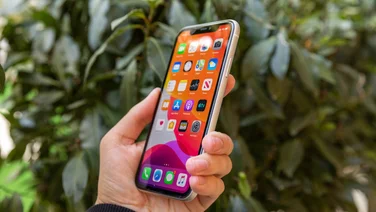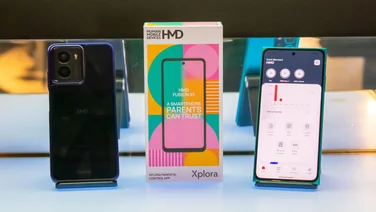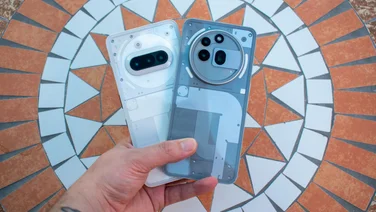To help us provide you with free impartial advice, we may earn a commission if you buy through links on our site. Learn more




















- Bright, colour-accurate display
- Terrific performance and battery life
- Exceptional portrait photography
- MagicOS isn’t great
- Rivals offer better software support
- No 4K/60fps video
The launch of the Honor 200 Pro is something of a momentous occasion for us in Europe, as it marks the first time that a ‘pro’ variant from this line has graced our shores. We’re also seeing a rather large jump in the numbering, from last year’s Honor 90 and Honor 90 Lite, all the way up to 200 in a single bound. All of this sets a certain level of expectation for the kind of phone we’re getting – so how does it stack up against the best smartphones on the market right now?
As it turns out, with a sleek and stylish design, a versatile camera suite that includes a telephoto lens – something that’s far from guaranteed at this price – and performance that can, at least for the most part, keep up with the competition, the Honor 200 Pro actually manages to live up to the ‘pro’ moniker. The software still irked me somewhat, and video shooting is lacking slightly, but neither of these is bothersome enough to outweigh everything that the Honor 200 Pro gets right.
Honor 200 Pro review: What you need to know
We start strong, with the kind of specs you would tend to expect at this price: the Honor 200 Pro has a big 6.78in OLED display, with a resolution of 2,700 x 1,224 and a 120Hz refresh rate. The processor is a new Snapdragon 8s Gen 3, paired with a hefty 12GB of RAM and 512GB of non-expandable storage space. And rounding out the internals is a chunky 5,200mAh battery that supports 100W wired charging and 66W wireless.




















Packed into the rear camera module is a 50MP (f/1.9) main lens, a 50MP (f/2.4) telephoto shooter (capable of a 2.5x optical zoom by itself or up to 50x digital zoom working in tandem with the main lens) and a 12MP (f/2.2) ultrawide camera. Meanwhile, over on the front we’ve got a 50MP (f/2.1) selfie camera with a 2MP (f/2.4) depth sensor which is meant to improve the quality of your front-facing portrait shots.
Honor 200 Pro review: Price and competition
At the time of writing, the Honor 200 Pro retails for £700. That’s what the Google Pixel 8 cost at launch, but you can now pick up the 256GB model for £609. You’d be trading away some storage and memory, but you’d still get a phenomenal camera suite – though, notably, lacking the Honor 200 Pro’s telephoto lens – and you’d have early access to the latest Android feature drops.Or you can get the equivalent 12GB/512GB of RAM and storage on the Nothing Phone (2) for less than the Honor 200 Pro – it was originally £699 but is currently discounted to £599. There’s no telephoto camera here either, but you do get a unique transparent style and the Glyph light system, as well as some of the best phone battery life we’ve ever recorded.
If you’re not fussed about the extra RAM and ROM, you can just about get an iPhone 15 for this price: the 128GB model is currently discounted from £799 to £699. Still no telephoto camera, and the display is only 60Hz, but you get the blisteringly fast A16 Bionic processor and a much-improved main camera.
READ NEXT: Best mid-range phone
Honor 200 Pro review: Design and key features
Measuring 75 x 8.2 x 163mm (WDH) and weighing 199g, the Honor 200 Pro is on the chunkier side but not so much that it becomes cumbersome. The design is premium and eye-catching, with polished metal edges, a curved display and different finishes for each of the colour options. The black version has a frosted glass rear, the Ocean Cyan style achieves a striking two-tone look by juxtaposing matte and gloss finishes and the Moonlight White model that I received has a pearl effect.Tucked in the top-left corner is the new oval camera housing, replacing the two separate circles that we saw on the Honor 90. It’s a sleek touch that I think works better than its predecessors.




















As has become fairly standard these days, there’s no 3.5mm headphone jack or microSD slot but it has most of the other usually expected features, including an optical fingerprint sensor beneath the display, face unlocking via the selfie camera and a fairly robust IP65 dust and water resistance rating. On top of these, the Honor 200 Pro also throws in an IR sensor, allowing you to use the phone as a remote control for your TV – very few brands bother with this anymore, so it’s always noteworthy when I see a phone bringing it back.
As for the software, the Honor 200 Pro launches running Android 14 with the brand’s own MagicOS 8.0 layered on top. I’ve never particularly enjoyed this launcher and, unfortunately, things are much the same here – the lack of an app drawer as standard feels like a backwards step to me, and the excess of preinstalled bloatware is as frustrating as ever. However, one thing I do like is the Magic Capsule, which expands the screen around the selfie cameras to show notifications from the likes of Alarms, Calls and Spotify, similar to Apple’s Dynamic Island.




















The promised software support is something of a double-edged sword: Honor has committed to three years of OS updates and four years of security patches – both of which are one year more than the Honor 90 received – but Google is casting a pretty big shadow here, as they’re offering seven years apiece, not just for the Pixel 8 and the Pixel 8 Pro, but also for the cheaper Pixel 8a.
Honor 200 Pro review: Display
The display really hits that flagship feel. The 6.78in OLED panel has a crisp 2,700 x 1,224 resolution and the expected 120Hz refresh rate. Although the bezels aren’t the skinniest I’ve ever seen, at least the edges roll off gently on all four sides so they seem fairly well hidden. The panel’s brightness is plenty, hitting a solid 606cd/m2 in my testing, and pushing to 1,127cd/m2 on adaptive brightness with a torch shining on the light sensor. The brightness only barely inched higher with HDR content, hitting 1,177cd/m2, but that’s decent enough for this price.




















More straightforward in my testing was the colour accuracy. The Vivid colour profile was my go-to for streaming content and playing games but the Normal mode was best for accuracy. On the latter, I recorded an sRGB gamut coverage of 97.7% and a total volume of 99.7%, with the 0.86 average Delta E colour variance score pointing to exceptional colour accuracy, since anything below 1 is basically perfect.
READ NEXT: Best Android phone
Honor 200 Pro review: Performance and battery life
The Honor 200 Pro was my first encounter with the Snapdragon 8s Gen 3 SoC – essentially a lite version of the main flagship chipset – and it made a decent enough first impression. The octa-core platform has a clock speed of 3GHz and it’s backed up here by a decent 12GB of RAM.
As you can see in the chart below, it performed roughly level with the Google Pixel 8’s Tensor G3 chip in the single-core benchmarks, but pulled ahead by around 11% in the multi-core, putting it about level with the Nothing Phone (2).
Apple still leaves the rest in the dust, though, with a lead over the Honor 200 Pro of 57% in the single-core and 38% in the multi-core.

However, Honor managed to pull it back in the gaming portion, going toe-to-toe with even the iPhone 15. The Google Pixel 8 is the notable slacker here, with the rest hitting a steady 60fps in the on-screen GFXBench tests, and 100 frames and change in the off-screen tests.
This translates to smooth, quality 3D gaming, even if it doesn’t fully take advantage of the phone’s 120Hz refresh rate. In my testing, I was able to run Asphalt 9: Legends without even a hint of stuttering, so the Honor 200 Pro should be able to handle whatever you throw at it.

Battery life is still very much the Nothing Phone (2)’s domain, but while the Honor 200 Pro doesn’t quite stretch to that, it managed a very respectable second place, with a terrific result of 26hrs and 49mins. They claim the 100W wired charging will fill the battery from empty to 60% in just 15 minutes, and to full in 41 minutes, which lines up well against the results of my own testing.

READ NEXT: Best phone battery life
Honor 200 Pro review: Cameras
If the marketing and my headline haven’t already made it clear, the focus of the Honor 200 Pro’s photography suite is firmly on portraits. Honor’s AI Portrait Engine takes influence from the moody portrait shots of Paris’ Studio Harcourt for its image processing and you can see the effects in the dramatic shadows and exceptional dynamic range.

Rear portraits can be taken with the 50MP (f/2.4) telephoto camera’s 2.5x optical zoom, or with a 2x digital crop on the 50MP (f/1.9) main lens. You’ve also got a 50MP (f/2.1) selfie camera paired with a 2MP depth sensor on the front but, unfortunately, these don’t get to use the three Studio Harcourt filters that the rear cameras get, and you will want to use these for your portraits.
Vibrant has a fairly standard look, so I didn’t bother with it much, while Colour (used above) has a warmer, more vintage vibe, but my favourite was the striking black and white Harcourt Classic – the monochrome pairs well with the stark lighting, creating quality shots that ooze personality.

When you aren’t using it for cropped portraits, the main camera produces 12.5MP 4-in-1 pixel-binned images that are packed with detail and vibrant colour. If you dig around in the settings, you can opt to shoot in the full 50MP, but this mode is perfectly sufficient for most shots.

Even after dark, things still look pretty great. The colours may be a little saturated for some people’s tastes but the detail capture is decent, and the sky is free from noise enough that the stars can shine through clearly.

The rest of the camera suite isn’t quite as strong but it still works, for the most part. The 12MP ultrawide lens is effective but loses detail towards the edges, while video is crisp, benefitting from OIS, but lacks the option to shoot in 4K at 60fps, which most other competitors offer at this price.
Honor 200 Pro review: Verdict
The majority of my issues with the Honor 200 Pro boil down to the fact that the software just isn’t as good as you can get elsewhere. In particular, the Google Pixel 8 offers a much more streamlined experience (not to mention several more years of support) for around the same price.
That said, there’s so little to dislike here that a few software wobbles aren’t a dealbreaker. Performance is good and battery life is fantastic, the display is practically flawless and the cameras are diverse and effective, particularly when it comes to portraits. Will that be enough to unseat the Pixel 8? We have yet to see, but if I were Google, I’d be concerned.





